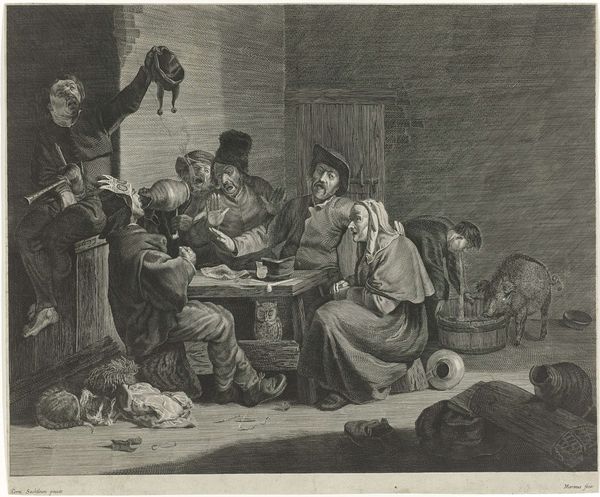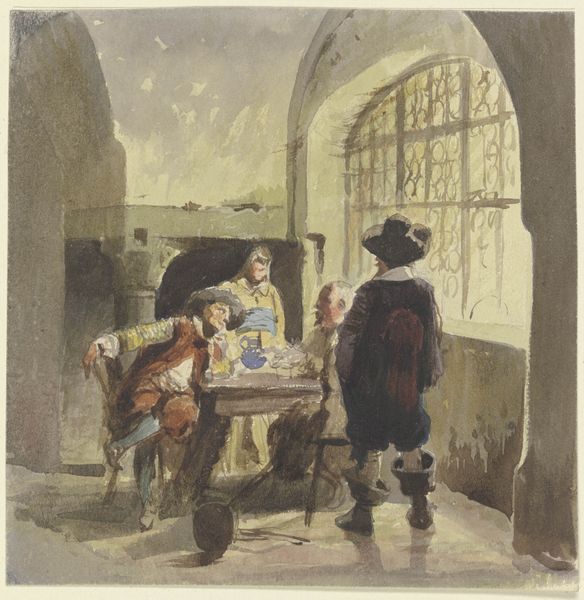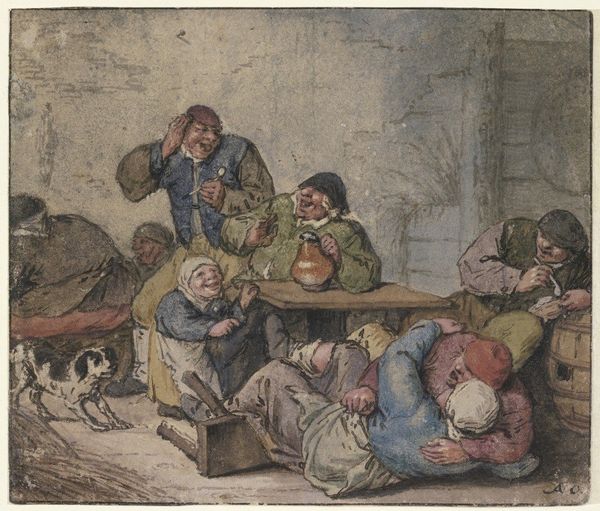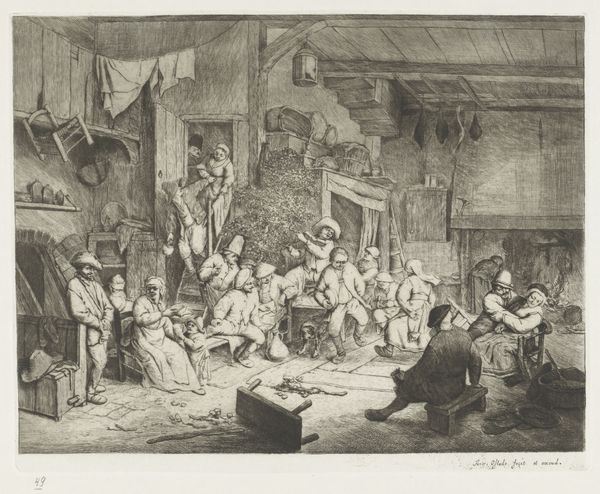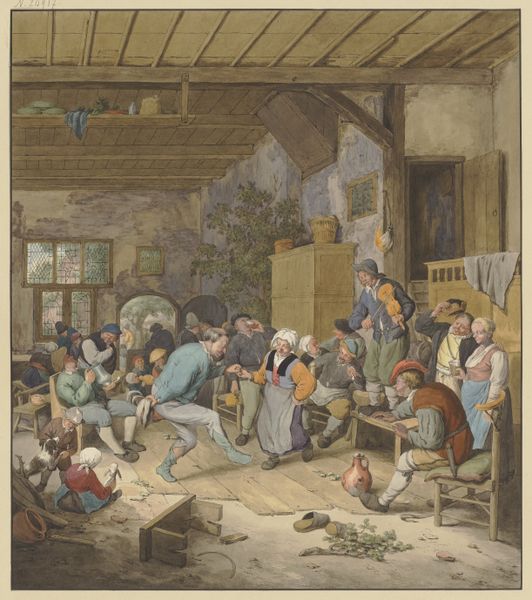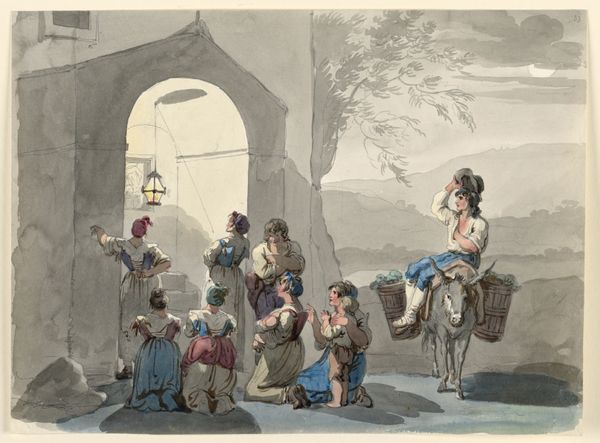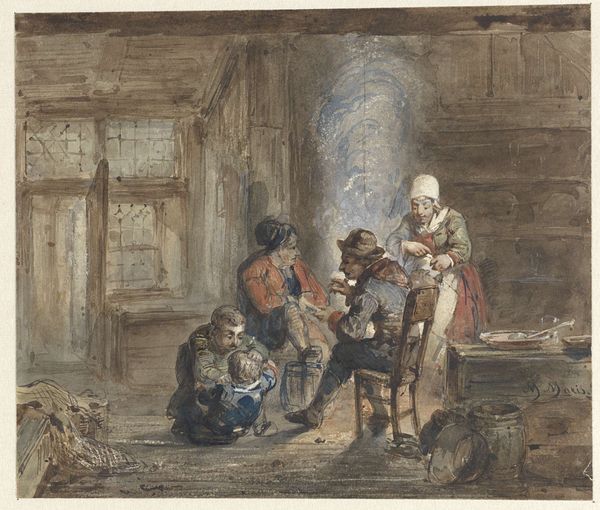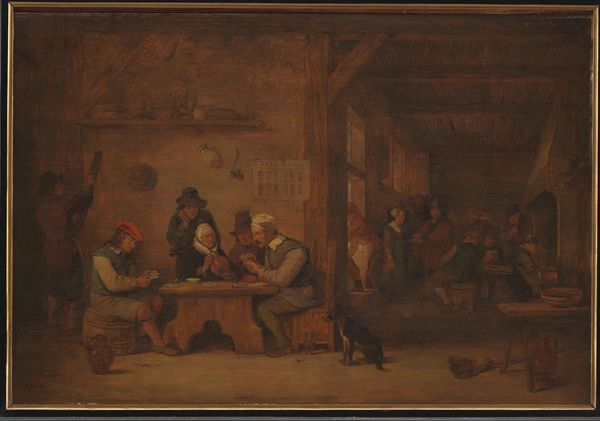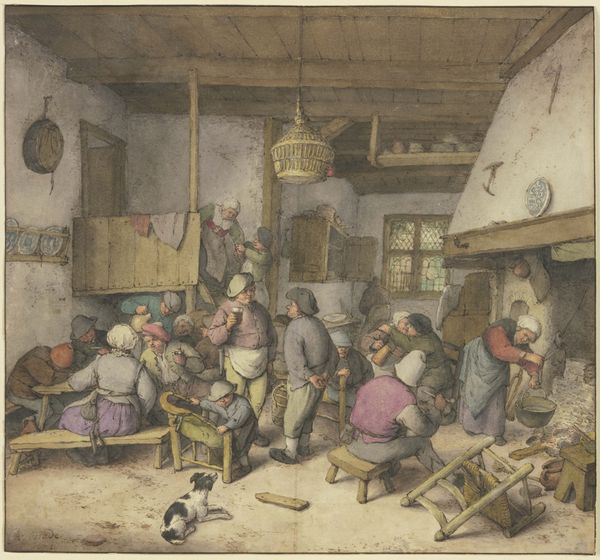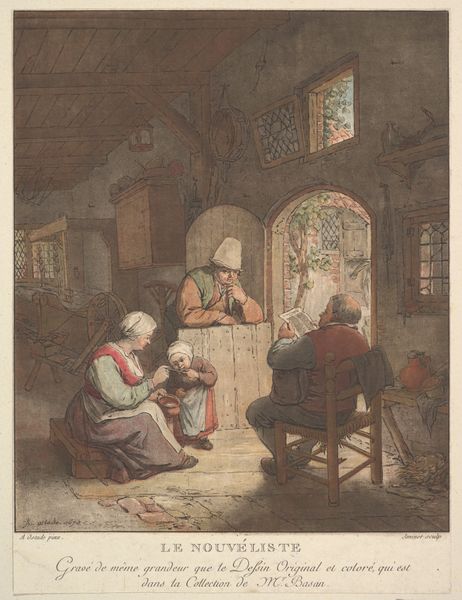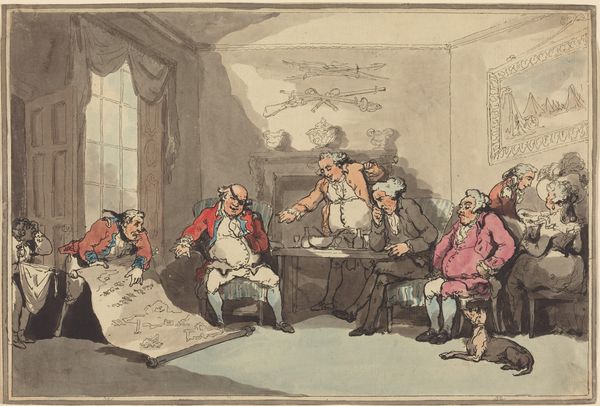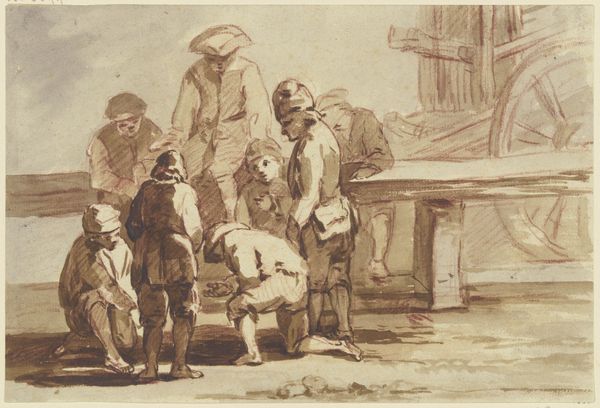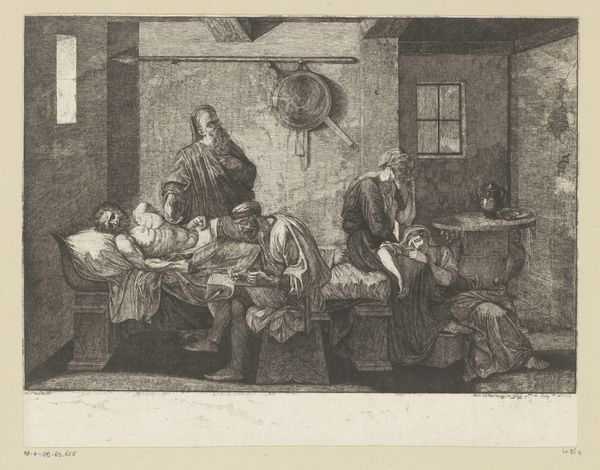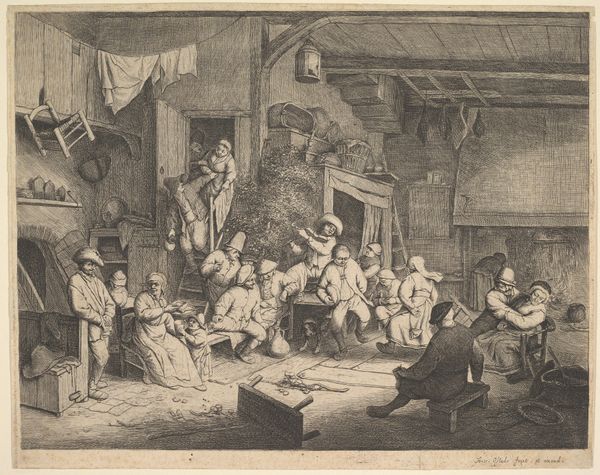
drawing, mixed-media, watercolor
#
portrait
#
drawing
#
mixed-media
#
narrative-art
#
impressionism
#
figuration
#
oil painting
#
watercolor
#
coloured pencil
#
group-portraits
#
genre-painting
#
history-painting
#
mixed media
#
watercolor
#
realism
Copyright: Public Domain
Curator: What strikes me immediately is the sheer pragmatism in this watercolor. It’s a scene, a snapshot almost, rendered in what seems to be mostly watercolor and mixed media; perhaps colored pencil too. Look at the bareness of the walls and the simple clothing, you can sense the conditions of these people. Editor: Exactly. We're viewing Rudolf Hirth du Frênes's "Feeding the Poor," from 1872, currently residing in the Städel Museum. What this work communicates to me isn't just about bareness of the walls but societal bareness. Look at who gets to eat, who has to wait. The painting offers commentary on class and gender, highlighting a system of imbalance. It pushes a discussion on who suffers most. Curator: Certainly, but look at how he builds the space with color, using it to construct form and light within what might be assumed as dark environments, the use of simple objects being tools that give glimpses into the environment as a space for survival and subsistence, revealing much. The quick gestures with watercolor create a tangible mood in such an environment. Editor: And the clothing—it signifies more than just what’s available. Each style differentiates groups; the women at the front are separated by their position, as well as garments, from the seated men in dark attire on the right. This is the artist portraying power and societal hierarchy using items available to him. It prompts questions about the social labor expected in these times. Curator: True, but without the tactile reality delivered via the application of the media, such observations might lack gravity. If one can see how thinly or thickly something is applied, it changes how that piece delivers that idea, what meaning is then applied from its rendering by such means. The medium offers us this intimate view. Editor: I see that. We bring to this our current awareness—intersecting race, class, gender to expose an old issue using art historical practice as a lever. Hirth du Frênes offers us a captured time and moment, yet speaks of many enduring conversations that still need attention. Curator: Absolutely, I now look forward to taking that reading forward with more thought paid to medium. Editor: And I leave here with fresh insight for continued explorations.
Comments
No comments
Be the first to comment and join the conversation on the ultimate creative platform.
